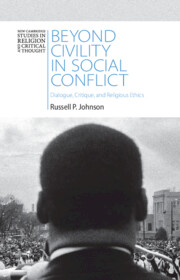Book contents
- Beyond Civility in Social Conflict
- Reviews
- Series page
- Beyond Civility in Social Conflict
- Copyright page
- Dedication
- Contents
- Acknowledgments
- Introduction
- 1 The Three Voices in the Ethics of Communication
- 2 The Rules Are Broken: Dilemmas of Restraint in War and Social Conflict
- 3 Integral Communication
- 4 Illusions and Indirect Communication
- 5 “Dynamically Aggressive”
- 6 Sharing the Good News
- Bibliography
- Index
- References
Bibliography
Published online by Cambridge University Press: 08 November 2024
- Beyond Civility in Social Conflict
- Reviews
- Series page
- Beyond Civility in Social Conflict
- Copyright page
- Dedication
- Contents
- Acknowledgments
- Introduction
- 1 The Three Voices in the Ethics of Communication
- 2 The Rules Are Broken: Dilemmas of Restraint in War and Social Conflict
- 3 Integral Communication
- 4 Illusions and Indirect Communication
- 5 “Dynamically Aggressive”
- 6 Sharing the Good News
- Bibliography
- Index
- References
- Type
- Chapter
- Information
- Beyond Civility in Social ConflictDialogue, Critique, and Religious Ethics, pp. 325 - 341Publisher: Cambridge University PressPrint publication year: 2024

